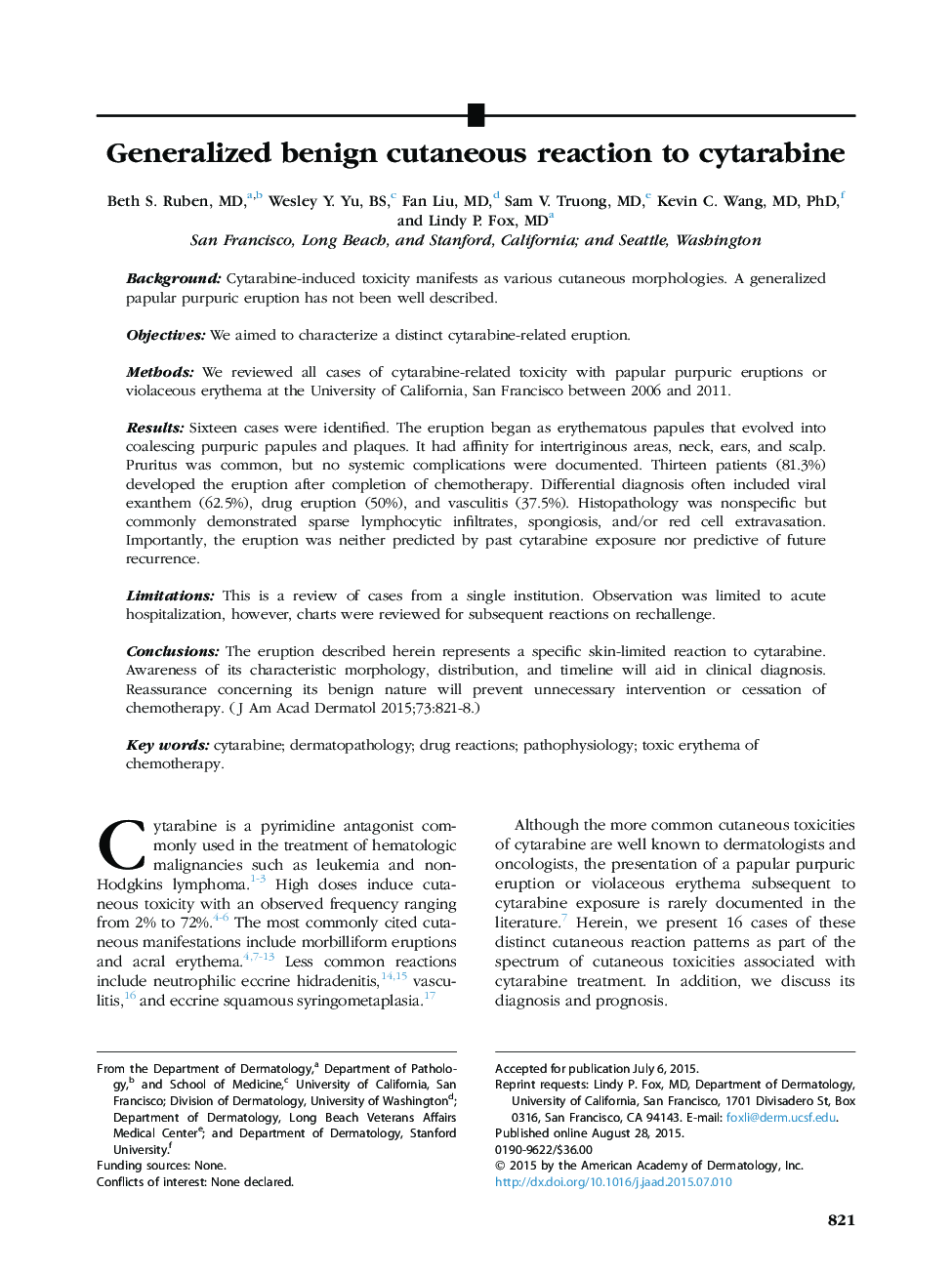| Article ID | Journal | Published Year | Pages | File Type |
|---|---|---|---|---|
| 3204595 | Journal of the American Academy of Dermatology | 2015 | 8 Pages |
BackgroundCytarabine-induced toxicity manifests as various cutaneous morphologies. A generalized papular purpuric eruption has not been well described.ObjectivesWe aimed to characterize a distinct cytarabine-related eruption.MethodsWe reviewed all cases of cytarabine-related toxicity with papular purpuric eruptions or violaceous erythema at the University of California, San Francisco between 2006 and 2011.ResultsSixteen cases were identified. The eruption began as erythematous papules that evolved into coalescing purpuric papules and plaques. It had affinity for intertriginous areas, neck, ears, and scalp. Pruritus was common, but no systemic complications were documented. Thirteen patients (81.3%) developed the eruption after completion of chemotherapy. Differential diagnosis often included viral exanthem (62.5%), drug eruption (50%), and vasculitis (37.5%). Histopathology was nonspecific but commonly demonstrated sparse lymphocytic infiltrates, spongiosis, and/or red cell extravasation. Importantly, the eruption was neither predicted by past cytarabine exposure nor predictive of future recurrence.LimitationsThis is a review of cases from a single institution. Observation was limited to acute hospitalization, however, charts were reviewed for subsequent reactions on rechallenge.ConclusionsThe eruption described herein represents a specific skin-limited reaction to cytarabine. Awareness of its characteristic morphology, distribution, and timeline will aid in clinical diagnosis. Reassurance concerning its benign nature will prevent unnecessary intervention or cessation of chemotherapy.
